|
|
Help |
| Home - Computer - Software (Books) | |
e99 Online Shopping Mall
|
|
Help |
| Home - Computer - Software (Books) | |
| Back | 21-40 of 100 | Next 20 |
click price to see details click image to enlarge click link to go to the store
| 21. The Business of Software: What Every Manager, Programmer, and Entrepreneur Must Know to Thrive and Survive in Good Times and Bad by Michael A. Cusumano | |
 | Hardcover: 352
Pages
(2004-03-02)
list price: US$30.00 -- used & new: US$9.70 (price subject to change: see help) Asin: 074321580X Average Customer Review: Canada | United Kingdom | Germany | France | Japan |
|
Editorial Review Product Description The world's leading expert on the global software industry and coauthor of the bestseller Microsoft Secrets reveals the inner workings of software giants like IBM, Microsoft, and Netscape and shows what it takes to create, develop, and manage a successful company -- in good times and bad -- in the most fiercely competitive business in the world. In the $600 billion software industry it is the business, not the technology, that determines success or failure. This fact -- one that thousands of once glamorous start-ups have unhappily discovered for themselves -- is the well-documented conclusion of this enormously readable and revealing new book by Michael Cusumano, based on nearly twenty years of research and consulting with software producers around the world. Cusumano builds on dozens of personal experiences and case studies to show how issues of strategy and organization are irrevocably linked with those of managing the technology and demonstrates that a thorough understanding of these issues is vital to success. At the heart of the book Cusumano poses seven questions that underpin a three-pronged management framework. He argues that companies must adopt one of three basic business models: become a products company at one end of the strategic spectrum, a services company at the other end, or a hybrid solutions company in between. The author describes the characteristics of the different models, evaluates their strengths and weaknesses, and shows how each is more or less appropriate for different stages in the evolution of a business as well as in good versus bad economic times. Readers will also find invaluable Cusumano's treatment of software development issues ranging from architecture and teams to project management and testing, as well as two chapters devoted to what it takes to create a successful software start-up. Highlights include eight fundamental guidelines for evaluating potential software winners and Cusumano's probing analysis, based on firsthand knowledge, of ten start-ups that have met with varying degrees of success. The Business of Software is timely essential reading for managers, programmers, entrepreneurs, and others who follow the global software industry. Customer Reviews (34)
| |
| 22. A+ Guide to Software: Managing, Maintaining, and Troubleshooting by Jean Andrews | |
 | Hardcover: 720
Pages
(2009-12-23)
list price: US$97.95 -- used & new: US$60.66 (price subject to change: see help) Asin: 1435487370 Average Customer Review: Canada | United Kingdom | Germany | France | Japan |
|
Editorial Review Product Description Customer Reviews (5)
| |
| 23. User Stories Applied: For Agile Software Development by Mike Cohn | |
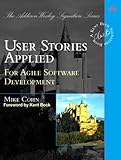 | Paperback: 304
Pages
(2004-03-11)
list price: US$54.99 -- used & new: US$33.48 (price subject to change: see help) Asin: 0321205685 Average Customer Review: Canada | United Kingdom | Germany | France | Japan |
|
Editorial Review Product Description Customer Reviews (47)
| |
| 24. Software Testing (2nd Edition) by Ron Patton | |
 | Paperback: 408
Pages
(2005-08-05)
list price: US$49.99 -- used & new: US$28.65 (price subject to change: see help) Asin: 0672327988 Average Customer Review: Canada | United Kingdom | Germany | France | Japan |
|
Editorial Review Product Description Software Testing, Second Edition provides practical insight into the world of software testing and quality assurance. Learn how to find problems in any computer program, how to plan an effective test approach and how to tell when software is ready for release. Updated from the previous edition in 2000 to include a chapter that specifically deals with testing software for security bugs, the processes and techniques used throughout the book are timeless. This book is an excellent investment if you want to better understand what your Software Test team does or you want to write better software. Customer Reviews (26)
| |
| 25. The Process of Software Architecting by Peter Eeles, Peter Cripps | |
 | Paperback: 432
Pages
(2009-07-24)
list price: US$49.99 -- used & new: US$34.93 (price subject to change: see help) Asin: 0321357485 Average Customer Review: Canada | United Kingdom | Germany | France | Japan |
|
Editorial Review Product Description Customer Reviews (3)
| |
| 26. Software Product Management Essentials by Alyssa Dver | |
 | Paperback: 202
Pages
(2003-04-13)
list price: US$34.95 -- used & new: US$19.99 (price subject to change: see help) Asin: 0929652010 Average Customer Review: Canada | United Kingdom | Germany | France | Japan |
|
Editorial Review Product Description Emphasizing that code is only part of the overall software product, Software Product Management Essentials stresses the importance of championing a product. Critical topics covered in the book include the product delivery process, beta testing, launching a software product, and software pricing. An entire chapter is dedicated to the issues of expanding the business internationally and the issues a Product Manager must consider before and during expansion. Numerous templates are provided to fast track the Product Manager's work including a sample non-disclosure agreement, product delivery checklist, and beta test agreement and summary. Customer Reviews (29)
| |
| 27. Rapid Development: Taming Wild Software Schedules by Steve McConnell | |
 | Paperback: 680
Pages
(1996-07-02)
list price: US$35.00 -- used & new: US$14.95 (price subject to change: see help) Asin: 1556159005 Average Customer Review: Canada | United Kingdom | Germany | France | Japan |
|
Editorial Review Product Description The nine page section entitled "Classic Mistakes Enumerated" is aloneworth the price of admission and should be required reading for alldevelopers, leads, and managers. Here are some types of the 36 classicmistakes that McConnell describes in detail: I suspect that if you've ever been involved in software development,you winced after reading each of these nine points. And you will learna great deal from the remaining 640 pages about concrete solutions. My only substantive gripe: cheesy Powerpoint graphics. Nonetheless,this book is Very Highly Recommended. Customer Reviews (114)
| |
| 28. The Architecture of Computer Hardware, Systems Software, & Networking: An Information Technology Approach by Irv Englander | |
 | Hardcover: 704
Pages
(2009-05-04)
-- used & new: US$57.49 (price subject to change: see help) Asin: 0471715425 Average Customer Review: Canada | United Kingdom | Germany | France | Japan |
|
Editorial Review Product Description Customer Reviews (4)
| |
| 29. How to Break Software: A Practical Guide to Testing W/CD by James A. Whittaker | |
 | Paperback: 208
Pages
(2002-05-19)
list price: US$46.40 -- used & new: US$18.97 (price subject to change: see help) Asin: 0201796198 Average Customer Review: Canada | United Kingdom | Germany | France | Japan |
|
Editorial Review Product Description Practical tutorial on how to actually do testing by presenting numerous "attacks" you can perform to test your software for bugs. James A. Whittaker is a well-known speaker and consultant, as well as seasoned professor. Customer Reviews (19)
| |
| 30. How to Break Web Software: Functional and Security Testing of Web Applications and Web Services. Book & CD by Mike Andrews, James A. Whittaker | |
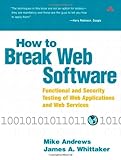 | Paperback: 240
Pages
(2006-02-12)
list price: US$49.99 -- used & new: US$27.49 (price subject to change: see help) Asin: 0321369440 Average Customer Review: Canada | United Kingdom | Germany | France | Japan |
|
Editorial Review Product Description Customer Reviews (12)
| |
| 31. Applied Software Project Management by Andrew Stellman, Jennifer Greene | |
 | Paperback: 336
Pages
(2005-11-18)
list price: US$39.95 -- used & new: US$29.99 (price subject to change: see help) Asin: 0596009488 Average Customer Review: Canada | United Kingdom | Germany | France | Japan |
|
Editorial Review Product Description "If you're looking for solid, easy-to-follow advice on estimation, requirements gathering, managing change, and more, you can stop now: this is the book for you." --Scott Berkun, Author ofThe Art of Project Management What makes software projects succeed? It takes more than a good idea and a team of talented programmers. A project manager needs to know how to guide the team through the entire software project. There are common pitfalls that plague all software projects and rookie mistakes that are made repeatedly--sometimes by the same people! Avoiding these pitfalls is not hard, but it is not necessarily intuitive. Luckily, there are tried and true techniques that can help any project manager. In Applied Software Project Management, Andrew Stellman and Jennifer Greene provide you with tools, techniques, and practices that you can use on your own projects right away. This book supplies you with the information you need to diagnose your team's situation and presents practical advice to help you achieve your goal of building better software. Topics include: Jennifer Greene and Andrew Stellman have been building software together since 1998. Andrew comes from a programming background and has managed teams of requirements analysts, designers, and developers. Jennifer has a testing background and has managed teams of architects, developers, and testers. She has led multiple large-scale outsourced projects. Between the two of them, they have managed every aspect of software development. They have worked in a wide range of industries, including finance, telecommunications, media, nonprofit, entertainment, natural-language processing, science, and academia. For more information about them and this book, visit http://www.stellman-greene.com. Customer Reviews (17)
| |
| 32. Software Engineering (9th Edition) by Ian Sommerville | |
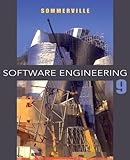 | Hardcover: 792
Pages
(2010-03-13)
list price: US$122.00 -- used & new: US$79.98 (price subject to change: see help) Asin: 0137035152 Average Customer Review: Canada | United Kingdom | Germany | France | Japan |
|
Editorial Review Product Description Customer Reviews (1)
| |
| 33. Head First Software Development by Tracey Pilone, Russ Miles | |
 | Paperback: 496
Pages
(2008-01-11)
list price: US$49.99 -- used & new: US$30.00 (price subject to change: see help) Asin: 0596527357 Average Customer Review: Canada | United Kingdom | Germany | France | Japan |
|
Editorial Review Product Description Even the best developers have seen well-intentioned software projects fail -- often because the customer kept changing requirements, and end users didn't know how to use the software you developed. Instead of surrendering to these common problems, let Head First Software Development guide you through the best practices of software development. Before you know it, those failed projects will be a thing of the past. Customer Reviews (17)
| |
| 34. Software Architecture in Practice (2nd Edition) by Len Bass, Paul Clements, Rick Kazman | |
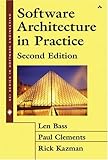 | Hardcover: 560
Pages
(2003-04-19)
list price: US$74.99 -- used & new: US$48.75 (price subject to change: see help) Asin: 0321154959 Average Customer Review: Canada | United Kingdom | Germany | France | Japan |
|
Editorial Review Product Description This award-winning book, substantially updated to reflect the latest developments in the field, introduces the concepts and best practices of software architecture--how a software system is structured and how that system's elements are meant to interact. Distinct from the details of implementation, algorithm, and data representation, an architecture holds the key to achieving system quality, is a reusable asset that can be applied to subsequent systems, and is crucial to a software organization's business strategy. Drawing on their own extensive experience, the authors cover the essential technical topics for designing, specifying, and validating a system. They also emphasize the importance of the business context in which large systems are designed. Their aim is to present software architecture in a real-world setting, reflecting both the opportunities and constraints that companies encounter. To that end, case studies that describe successful architectures illustrate key points of both technical and organizational discussions. Topics new to this edition include: If you design, develop, or manage the building of large software systems (or plan to do so), or if you are interested in acquiring such systems for your corporation or government agency, use Software Architecture in Practice, Second Edition, to get up to speed on the current state of software architecture. Customer Reviews (25)
| |
| 35. Code: The Hidden Language of Computer Hardware and Software by Charles Petzold | |
 | Paperback: 400
Pages
(2000-10-11)
list price: US$17.99 -- used & new: US$11.50 (price subject to change: see help) Asin: 0735611319 Average Customer Review: Canada | United Kingdom | Germany | France | Japan |
|
Editorial Review Product Description The realvalue of Code is in its explanation of technologies that havebeen obscured for years behind fancy user interfaces and programmingenvironments, which, in the name of rapid application development,insulate the programmer from the machine. In a section on machinelanguage, Petzold dissects the instruction sets of the genre-definingIntel 8080 and Motorola 6800 processors. He walks the reader throughthe process of performing various operations with each chip,explaining which opcodes poke which values into which registers alongthe way. Petzold knows that the hidden language of computers exhibitsreal beauty. In Code, he helps readers appreciateit. --David Wall Topics covered: Mechanical andelectrical representations of words and numbers, number systems, logicgates, performing mathematical operations with logic gates,microprocessors, machine code, memory and programming languages. Customer Reviews (83)
| |
| 36. Software Security: Building Security In by Gary McGraw | |
 | Paperback: 448
Pages
(2006-02-02)
list price: US$64.99 -- used & new: US$35.00 (price subject to change: see help) Asin: 0321356705 Average Customer Review: Canada | United Kingdom | Germany | France | Japan |
|
Editorial Review Product Description This is the Mobipocket version of the print book. "When it comes to software security, the devil is in the details. This book tackles the details." "McGraw's book shows you how to make the 'culture of security' part of your development lifecycle." "McGraw is leading the charge in software security. His advice is as straightforward as it is actionable. If your business relies on software (and whose doesn't), buy this book and post it up on the lunchroom wall." Beginning where the best-selling book Building Secure Software left off, Software Security teaches you how to put software security into practice.The software security best practices, or touchpoints, described in this book have their basis in good software engineering and involve explicitly pondering security throughout the software development lifecycle. This means knowing and understanding common risks (including implementation bugsand architectural flaws), designing for security, and subjecting all software artifacts to thorough, objective risk analyses and testing. Software Security is about putting the touchpoints to work for you. Because you can apply these touchpoints to the software artifacts you already produce as you develop software, you can adopt this book's methods without radically changing the way you work. Inside you'll find detailed explanations of In addition to the touchpoints, Software Security covers knowledge management, training and awareness, and enterprise-level software security programs. Now that the world agrees that software security is central to computer security, it is time to put philosophy into practice. Create your own secure development lifecycle by enhancing your existing software development lifecycle with the touchpoints described in this book. Let this expert author show you how to build more secure software by building security in. Customer Reviews (19)
| |
| 37. The Software Requirements Memory Jogger: A Pocket Guide to Help Software And Business Teams Develop And Manage Requirements (Memory Jogger) by Ellen Gottesdiener | |
 | Spiral-bound: 360
Pages
(2005-11-30)
list price: US$21.95 -- used & new: US$13.13 (price subject to change: see help) Asin: 1576810607 Average Customer Review: Canada | United Kingdom | Germany | France | Japan |
|
Editorial Review Product Description Customer Reviews (27)
| |
| 38. Pattern-Oriented Software Architecture Volume 1: A System of Patterns by Frank Buschmann, Regine Meunier, Hans Rohnert, Peter Sommerlad, Michael Stal | |
 | Hardcover: 476
Pages
(1996-08-08)
list price: US$90.00 -- used & new: US$41.29 (price subject to change: see help) Asin: 0471958697 Average Customer Review: Canada | United Kingdom | Germany | France | Japan |
|
Editorial Review Product Description For architectural patterns, the authors look at the Layers pattern,used in operating systems such as Windows NT and virtualmachines. They also consider Pipes and Filters, which process streamsof data. (This pattern, the authors point out, is a lynchpin of Unix.)Their Blackboard pattern shows how a complex problem, such as image orspeech recognition can be broken up into smaller, specializedsubsystems that work together to solve a problem. (For recognizingwords from a raw waveform input, a Blackboard approach might haveseparate processes to find phonemes, then words, then sentences.) This book also looks at today's distributed systems in considering theBroker pattern, which is used on the Internet and in Microsoft's OLEtechnology.This section also presents several powerful patterns forbuilding effective graphical user interfaces, such asModel-View-Controller. The authors define several well-known design patterns, such as theProxy and Command patterns, and also basic, far-reaching patterns,such as Whole-Part and Master-Slave, which are widely used throughoutcomputing. Their survey ends with a discussion on the way objects cancommunicate (using such patterns as Forwarder-Receiver,Client-Dispatcher-Server, and Publisher-Subscriber), which manydevelopers will recognize as familiar patterns, but are codified hereas "official" patterns. The book then discusses some idiomsin C++ and a more far-reaching role for patterns in software designand architecture.By fitting patterns into traditional softwareengineering practices, the authors of Pattern-Oriented SoftwareArchitecture successfully argue that the role for patterns willonly continue to diversify and enrich tomorrow's software engineeringtools and methodologies. --Richard Dragan Customer Reviews (16)
Only chapter 2 really addresses patterns for the strategic, architectural level of a software system. It does a very adequate job, using a variety of notations, examples, and analysis steps. This book is from 1996, so time has changed our view of some patterns. "Reflection," for example, has become pervasive in applications based on plugins and software components. It is also a fundamental API in the major langauges (Java and C#) released since this book was published - perhaps reflection should be downgraded to an "idiom". That's just nitpicking, though, since reflection is even more important now than when the book was written. For contrast, the authors present additional design patterns (including some from Gamma's book) for use at tactical design levels. They also discuss idioms patterns that typically involve just a few lines of code within on function. The contrast between the three different levels of implementation and design gives a useful discussion. The authors also present a weak chapter on "systems" or "langauges" of patterns The discussion is OK as far as it goes. The weakness is in what it omits. After reading this brief chapter, the programmer has very little practical information about choosing patterns from some library for some task. The poor programmer has no information at all about how to link patterns together, and that's a real stumbling block for beginning pattern users. The final section of the book is really sociology. It's about the pattern community, what that community is for, and how to be a working member. I find the discussion un-helpful, but I expect opinions to differ. Even today, this is a good second book (after Gamma's 'Design Patterns') on patterns and pattern usage. It lack the depth and precision of Gamma's book, and tends to add words without adding meaning. On the positive side, it's broader than Gamma's, and addresses a wider range of implementation levels. ... Read more | |
| 39. 24 Deadly Sins of Software Security: Programming Flaws and How to Fix Them by Michael Howard, David LeBlanc, John Viega | |
 | Paperback: 432
Pages
(2009-09-03)
list price: US$49.99 -- used & new: US$27.94 (price subject to change: see help) Asin: 0071626751 Average Customer Review: Canada | United Kingdom | Germany | France | Japan |
|
Editorial Review Product Description "What makes this book so important is that it reflects the experiences of two of the industry's most experienced hands at getting real-world engineers to understand just what they're being asked for when they're asked to write secure code. The book reflects Michael Howard's and David LeBlanc's experience in the trenches working with developers years after code was long since shipped, informing them of problems." --From the Foreword by Dan Kaminsky, Director of Penetration Testing, IOActive Eradicate the Most Notorious Insecure Designs and Coding Vulnerabilities Fully updated to cover the latest security issues, 24 Deadly Sins of Software Security reveals the most common design and coding errors and explains how to fix each one-or better yet, avoid them from the start. Michael Howard and David LeBlanc, who teach Microsoft employees and the world how to secure code, have partnered again with John Viega, who uncovered the original 19 deadly programming sins. They have completely revised the book to address the most recent vulnerabilities and have added five brand-new sins. This practical guide covers all platforms, languages, and types of applications. Eliminate these security flaws from your code: Customer Reviews (2)
| |
| 40. Agile Software Development, Principles, Patterns, and Practices by Robert C. Martin | |
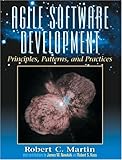 | Hardcover: 529
Pages
(2002-10-25)
list price: US$80.00 -- used & new: US$55.97 (price subject to change: see help) Asin: 0135974445 Average Customer Review: Canada | United Kingdom | Germany | France | Japan |
|
Editorial Review Product Description Written by a software developer for software developers, this book is a unique collection of the latest software development methods. The author includes OOD, UML, Design Patterns, Agile and XP methods with a detailed description of a complete software design for reusable programs in C++ and Java. Using a practical, problem-solving approach, it shows how to develop an object-oriented application—from the early stages of analysis, through the low-level design and into the implementation. Walks readers through the designer's thoughts — showing the errors, blind alleys, and creative insights that occur throughout the software design process. The book covers: Statics and Dynamics; Principles of Class Design; Complexity Management; Principles of Package Design; Analysis and Design; Patterns and Paradigm Crossings. Explains the principles of OOD, one by one, and then demonstrates them with numerous examples, completely worked-through designs, and case studies. Covers traps, pitfalls, and work arounds in the application of C++ and OOD and then shows how Agile methods can be used. Discusses the methods for designing and developing big software in detail. Features a three-chapter, in-depth, single case study of a building security system. For Software Engineers, Programmers, and Analysts who want to understand how to design object oriented software with state of the art methods. Customer Reviews (34)
| |
| Back | 21-40 of 100 | Next 20 |